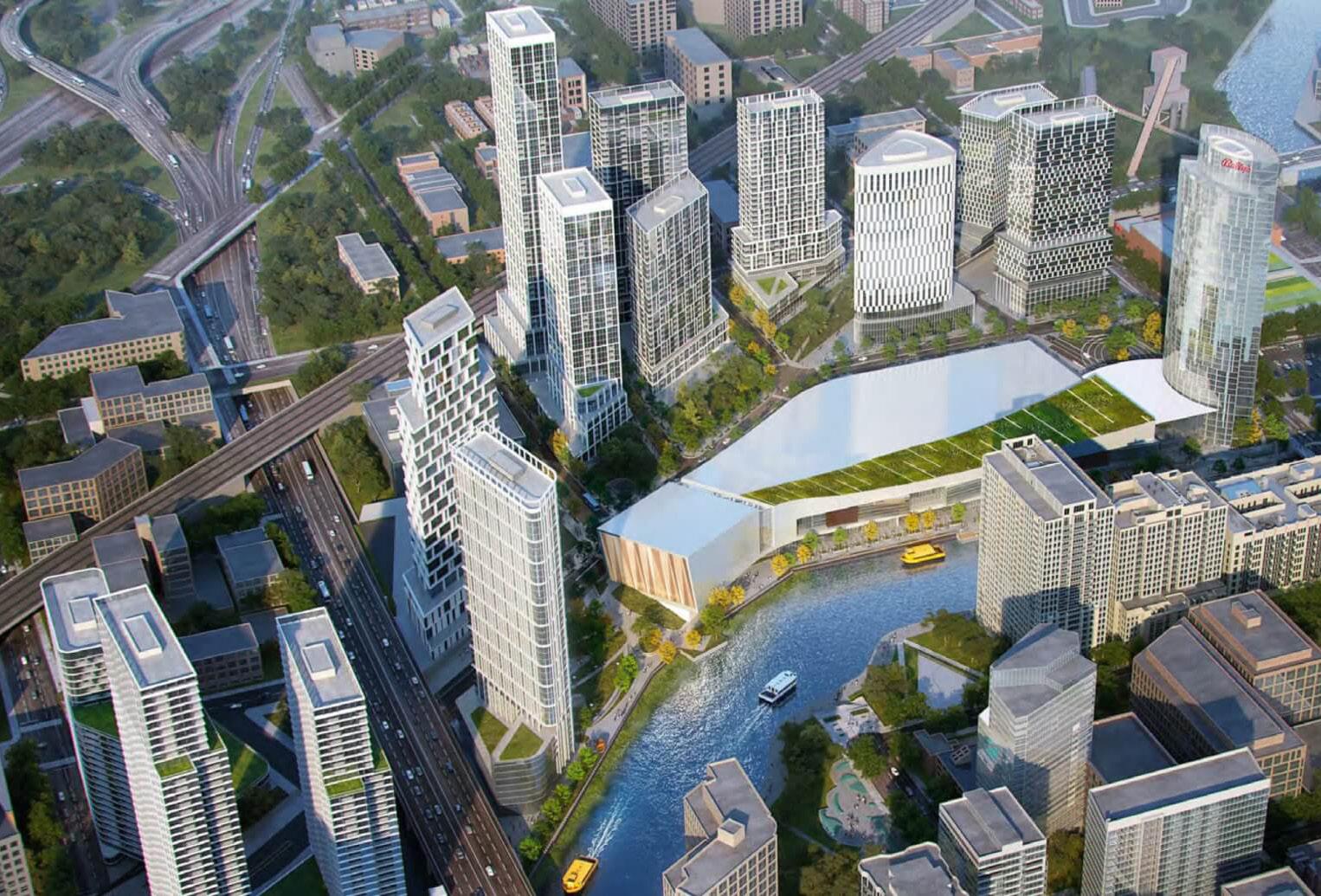
3 minute read
CASINOS IN THE CITY AFTER LEGISLATIVE CHANGES, MORE GAMBLING OPERATIONS ARE BEING PROPOSED FOR DENSE URBAN LOCATIONS. IS THIS A GOOD THING?
Casino gambling, a potent engine of wealth redistribution from the hopeful to the fortunate, is moving from a handful of dedicated sites into America’s larger cities. With more states legalizing more forms of gambling and the casino sector responding robustly to competition from online betting, this type of entertainment has outgrown its traditional localized base culturally, economically, and physically. As New York joins Philadelphia, Baltimore, and other cities as sites of urban casinos, residents will soon discover how much the industry can change a neighborhood and perhaps how urban settings can change the industry.
The mainstreaming of these pastimes affects their architectural and urbanistic aspects. Two familiar models of the casino as a building typology—the decorated sheds from which readers of Robert Venturi, Denise Scott Brown, and Steven Izenour have been learning since 1972 and the Native American–owned complexes that have appeared since the 1980s, often large-scale and at a distance from major cities—are now joined by a third variant: the urban casino, potentially as upscale as certain overseas models (Monaco or Macau) and situated where they are far from being the only game in town.
Legal Pariahs No More
The spread of legal sports betting after 2018, when the Supreme Court struck down the federal Professional and Amateur Sports Protection Act, has accelerated the industry’s expansion. New York’s state legislature raised the stakes in 2022 by authorizing licenses for up to three full (Class III) casinos in the downstate region, which includes metropolitan New York City and Long Island. (Four upstate casinos have been operating since legalization in 2013.) A three-person Gaming Facility Location Board is overseeing the selection process and consulting community committees formed to assess local support for each application; a request for applications went out in early January with no deadline but with a $500 million licensing fee and an expectation that a proprietor will invest at least that amount in the project.
Under post-COVID conditions where work and play have remained in a hybrid format, new casinos need to expand beyond the thrill of the action per se and offer patrons reasons to congregate at specific places, while also offering communities reasons to welcome them. Competition is becoming fierce over which places these will be. Local sites under consideration include the established racinos in Queens (Genting Group’s Resorts World NYC) and Yonkers (MGM Resorts International’s Empire City), believed to be front-runners for two of the full-casino licenses. For the third, proposals to date, ranging from announced partnerships to media speculation, include the undeveloped western segment of Hudson Yards (Related Companies/ Wynn Resorts), 1515 Broadway in Times Square (SL Green/ Caesars Entertainment), Coney Island (Thor Equities/
Saratoga Casino Holdings/Chickasaw Nation/Legends), a 6.7-acre lot near the United Nations (Soloviev Group/ Mohegan), Nassau Veterans Memorial Coliseum in Uniondale (Las Vegas Sands), and the upper floors of Saks Fifth Avenue’s midtown flagship (Hudson’s Bay Company).
Additionally, Vornado Realty is reportedly considering seeking a casino license as part of its controversial plan to demolish the Hotel Pennsylvania, and in January Mets owner Steven Cohen invited Queens residents for a community discussion about a possible casino for Willets Point. The longest shot may be the bruited replacement of a Bronx golf clubhouse by a Bally’s casino, contingent on removing from the property the name of a locally unpopular figure (and former White House occupant) with well-publicized ties to organized crime.
New York City’s embrace of casinos is part of a sustained national trend. Texas legislators are considering whether to give voters a chance to legalize casinos this November, and Chicago’s city council and alderpeople have approved a riverfront Bally’s project, designed by SCB, as part of a multiphase, multipurpose development. (State licensure is still pending.) Montana, Louisiana, and Oklahoma each have over 100 casinos; casinos began opening in the four largest cities in Ohio (Cleveland, Cincinnati, Columbus, and Toledo) in 2012, after a 2009 state constitutional amendment; and six have opened across Maryland during the same period. The American Gaming Association (AGA) reports that all but six states have commercial gambling (in a total of 466 casinos), tribal gambling (515 casinos), or both, and commercial casinos have broken gross revenue records for the past two years, crossing the $60 billion threshold in 2022. Tribal revenues, tracked separately, are not far behind, at $39 billion for 2021.
Casinos’ prodigious influence can bleed an area’s economy dry, as historians have argued happened to Atlantic City. Backlashes have happened: In 2000 South Carolina ended its experiment with video poker (“hardcore, grab-the-paycheck gambling” associated with graft and widespread addiction but lacking the offsetting benefits of casino construction and hotel employment, according to an activist quoted in both Harper’s and Slate the previous year) and reverted to a near-total gambling ban, allowing it only on offshore cruises. An extensive social-science literature correlates high rates of problem gambling with proximity to casinos, and as Stephen Marche put it in a 2021 Atlantic overview of gambling’s expansion into sports and the economy at large, “Gambling produces corruption the way salt water produces rust. You can fight it for a while, but it wins in the end.” Yet casinos and governments can also redirect the resources more constructively, and acceptance within competitive environments arguably compels them to do so. Proponents point to the public revenues and private-sector jobs they generate, potentially offsetting the social problems cited by detractors.










